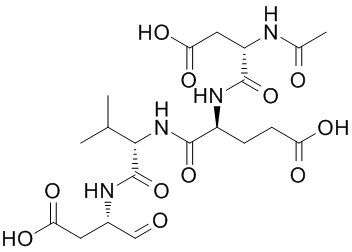For the expression of proteins containing disulfide bonds and normally forms inactive inclusion bodies. Therefore, additional in-vitro refolding is required to obtain biologically functional proteins. However, it is well known that invitro refolding of Eleutheroside-E protein in inclusion bodies is often unpredictable and challenging, in addition to being time consuming and requiring a large amount of reagents. Overall, generation of protein in soluble form is the preferred choice. Extensive efforts have been made to overcome these obstacles to improve soluble expression of different disulfide-bonded proteins in the cytosol of E. coli. Cysteines in the E. coli cytoplasm are actively kept reduced by pathways involving thioredoxin reductase and glutaredoxin, so one strategy is to alter these reducing pathways to change the cytoplasmic thiol-redox equilibrium environment. In the current work, a TRX fusion tag was attached to the Nterminus of the FGF19 and FGF15 protein, then the fusion proteins were expressed in various E. coli mutant Ganoderic-acid-F strains, and soluble protein expression in bacteria cytoplasm were determined. Previous studies have shown no post-translational modification in mature FGF15 and FGF19 proteins, indicating that the bacterial system could be used for expression of both proteins. However, both proteins contain two disulfide bonds, suggesting that they may be expressed as insoluble inclusion bodies due to the lack of ability to form disulfide bond in the reducing environment of E. coli cytoplasm. With the modification of the cytoplasmic reducing environment and co-expression of fusion protein TRX chaperones, soluble FGF19 protein can be expressed in bacterial cytosol, and this result is consistent with a previous finding showing that thioredoxin can improve disulfide bond formation in a reducing background. Interestingly, co-expression of DsbC alone in the reducing environment of the cytoplasm was sufficient to improve FGF19 solubility.  Disulfide isomerase is a periplasmic enzyme that catalyzes the isomerization of disulfide bonds. DsbC has been found to function as a chaperone to improve the solubility of disulfide bonds containing proteins in E. coli cytoplasm. This could also explain why TRX fusion protein in the presence of DsbC would further improve FGF19 solubility. However, modification of the reducing environment and co-expression with these chaperones did not help produce satisfactory quantities of soluble FGF15 protein, indicating that other factors may be critical for its soluble expression. Moreover, it’s well known that every species has codon usage bias, and differences in codon usage can impede translation due to shortage or lacking for one or more tRNAs when heterologous proteins are overexpressed in E. coli. Plasmids of pRARE2 from Rosettagami 2 cells, which supplies tRNAs for seven rare codons, were isolated and cotransfected with the FGF15 and FGF19 expression plasmids into SHuffle T7 E. coli strains, but the results showed that overexpression of the rare tRNAs had no effect on the FGF15 and FGF19 solubility in the cytoplasm, indicating that codon bias is not the major reason to prevent FG15 soluble expression. More studies need to be performed to determine the mechanism. Because both FGF15 and FGF19 have been shown to suppress the expression of the Cyp7a1 gene that is critical in bile acid synthesis through activating its receptor, FGFR4, they were predicted to have the same features. However, the FGF15 protein only shares 50% sequence homology with FGF19; moreover, our results showed that it’s much easier to express soluble FGF19 protein or refold FGF19 protein from inclusion bodies than those for FGF15 protein, indicating that there might be a greater difference between these two proteins than expected.
Disulfide isomerase is a periplasmic enzyme that catalyzes the isomerization of disulfide bonds. DsbC has been found to function as a chaperone to improve the solubility of disulfide bonds containing proteins in E. coli cytoplasm. This could also explain why TRX fusion protein in the presence of DsbC would further improve FGF19 solubility. However, modification of the reducing environment and co-expression with these chaperones did not help produce satisfactory quantities of soluble FGF15 protein, indicating that other factors may be critical for its soluble expression. Moreover, it’s well known that every species has codon usage bias, and differences in codon usage can impede translation due to shortage or lacking for one or more tRNAs when heterologous proteins are overexpressed in E. coli. Plasmids of pRARE2 from Rosettagami 2 cells, which supplies tRNAs for seven rare codons, were isolated and cotransfected with the FGF15 and FGF19 expression plasmids into SHuffle T7 E. coli strains, but the results showed that overexpression of the rare tRNAs had no effect on the FGF15 and FGF19 solubility in the cytoplasm, indicating that codon bias is not the major reason to prevent FG15 soluble expression. More studies need to be performed to determine the mechanism. Because both FGF15 and FGF19 have been shown to suppress the expression of the Cyp7a1 gene that is critical in bile acid synthesis through activating its receptor, FGFR4, they were predicted to have the same features. However, the FGF15 protein only shares 50% sequence homology with FGF19; moreover, our results showed that it’s much easier to express soluble FGF19 protein or refold FGF19 protein from inclusion bodies than those for FGF15 protein, indicating that there might be a greater difference between these two proteins than expected.